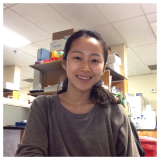Single-cell RNA-seq Profiling of Transcriptional Transition States During Human Retinoblastoma

Background
Retinoblastoma is a childhood ocular tumor initiated by the inactivation of the RB1 gene and subsequent loss of retinoblastoma protein (pRB). Although pRB loss is the key-initiating event, the molecular mechanisms controlling the transformation of a normal retinal cell into malignancy remain unclear.
This project seeks to define the cell state transitions that follow RB1 inactivation in the cone photoreceptor precursor as a way to identify mediators of tumor initiation and transformation that can be targeted to better treat and prevent retinoblastoma.
Project Goal
Aim 1 will identify human-specific features of the cone precursor gene expression program that collaborate with pRB loss to initiate tumorigenesis, as a means to identify key cancer-predisposing factors. Aim 2 will define the sequential gene expression changes in cone precursors as they begin to proliferate. Individual cells will be analyzed by single-cell RNA sequencing (scRNA-seq) and the tumor initiation states of each cell will be put in order. Aim 3 will define the additional changes that occur after the pRB-depleted retinal cells begin to form tumors in a mouse model. The gene expression changes detected following pRB depletion and in growing tumors will be studied to define their roles in tumorigenesis.
This study seeks to identify novel tumor initiation and transformation-related events that can be pharmacologically targeted to suppress tumorigenesis. It will spark new approaches to treat and prevent retinoblastoma and potentially other cancers in genetically predisposed children.
"I am honored and privileged to partner with the Alex's Lemonade Stand Foundation in their critical mission to end childhood cancer. My work focuses on retinoblastoma, the leading ocular cancer and a frequent cause of vision loss in children. The ALSF award enables me to understand the detailed signaling mechanism of retinoblastoma initiation and development, which is crucial for finding novel pharmacologic agents, in order to prevent this blinding cancer in genetically predisposed children." - Sunhye Lee, PhD

